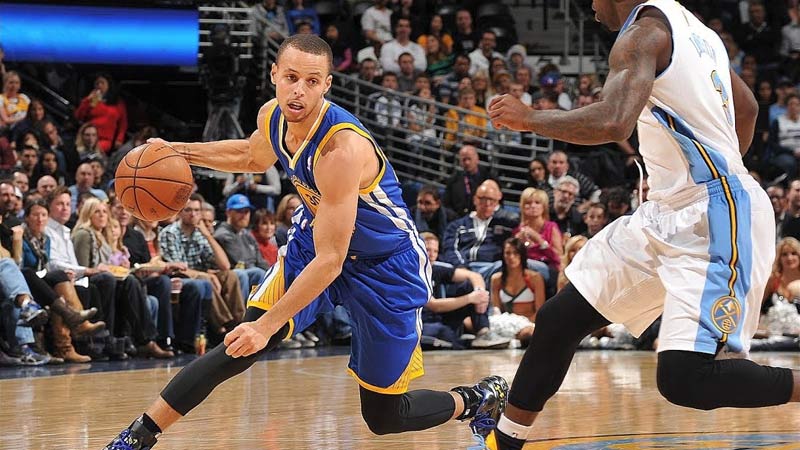Basketball is a game of skill and finesse, with players constantly looking for ways to outmaneuver their opponents. One of the most effective moves in a player’s arsenal is the crossover.
In this article, we will explore what a crossover is in basketball, the types of dribble crossovers, and provide a step-by-step guide on how to execute a crossover effectively.
We will also discuss some key points to remember while performing a crossover and delve into the historical significance of the dribble in basketball.
What is a Crossover in Basketball?
A crossover in basketball is a dribbling move where a player quickly switches the ball from one hand to the other while moving in a different direction.
It is used to deceive the defender and create space for the offensive player to drive to the basket, take a jump shot, or make a pass.
The crossover involves a combination of speed, agility, and ball-handling skills, allowing the player to change direction abruptly and leave the defender off balance.
It is a fundamental move used by guards and other perimeter players to outmaneuver their opponents on the court.
Types of Dribble in Basketball Crossover
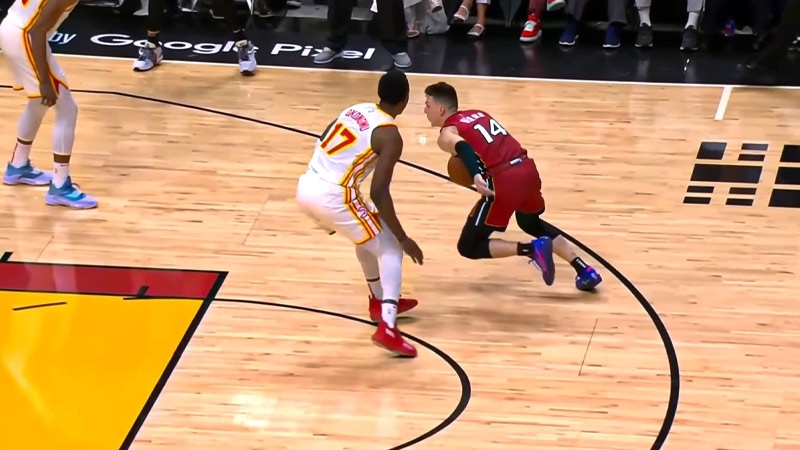
Before diving into the specifics of executing a crossover, it’s essential to understand the different types of dribble crossovers that players can utilize. These include:
Basic Crossover
This is the fundamental crossover move where the ball is dribbled from one hand to the other, changing direction and deceiving the defender.
Between the Legs Crossover
In this variation, the ball is crossed between the legs to switch hands, creating separation from the defender.
Behind the Back Crossover
This move involves dribbling the ball behind the back to the opposite hand, surprising the defender with the change in direction.
Hesitation Crossover
The hesitation crossover involves a slight pause or hesitation before executing the crossover, throwing off the defender’s timing and balance.
Killer Crossover
Popularized by Allen Iverson, the killer crossover combines a quick change of direction, a low dribble, and explosive speed to create space and leave defenders off-balance.
How to Crossover in Basketball?
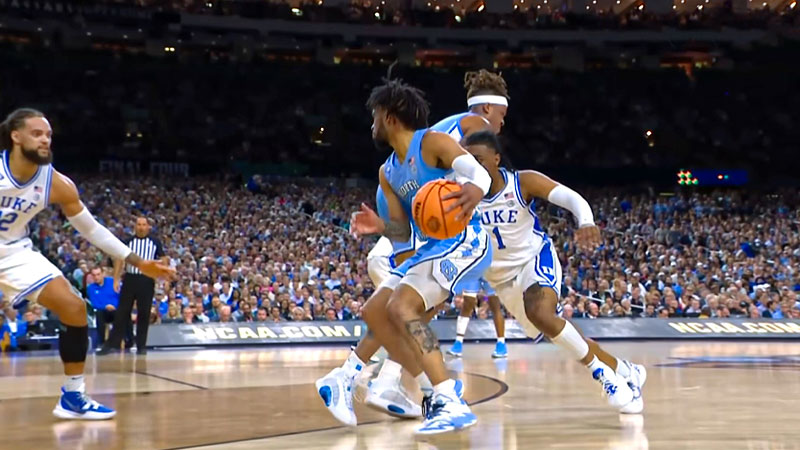
Now that we have familiarized ourselves with the types of dribble crossovers, let’s outline a step-by-step guide on how to execute a crossover effectively:
Step 1: Improve the Dribble Skill
Before attempting a crossover, it’s crucial to develop solid dribbling skills. This involves practicing dribbling low and close to the body, using both hands proficiently, and maintaining control of the ball.
By honing your dribbling abilities, you will have a solid foundation for executing crossovers effectively.
Step 2: Fake the Dominant Side
To set up a successful crossover, it’s important to fake a move toward your dominant side. This initial fake will force the defender to shift their weight and anticipate the movement, creating an opportunity for the crossover.
Make the fake as realistic as possible by leaning and extending your body towards the dominant side.
Step 3: Show Hesitation
After faking the dominant side, it’s crucial to incorporate hesitation. This involves pausing for a split second to disrupt the defender’s timing and create uncertainty.
The hesitation move can be as subtle as a slight freeze or hesitation with your body or the ball, causing the defender to hesitate and potentially lose their defensive positioning.
Step 4: Stay Low
Throughout the crossover move, it’s important to maintain a low and balanced stance. This low position provides stability and enables quick changes in direction.
Bend your knees, keep your body centered, and stay on the balls of your feet to ensure quick and agile movements during the crossover.
Step 5: Cross the Ball
With a quick and explosive motion, execute the crossover by swiftly transferring the ball from your dominant hand to your non-dominant hand or vice versa.
The crossover should be controlled and executed close to the body to minimize the defender’s opportunity to steal the ball.
Focus on keeping the crossover tight and precise, ensuring that the ball stays under your control at all times.
Step 6: Focus on the Defender’s Back
As you perform the crossover, shift your focus toward the defender’s back. This will help you gauge their reaction and anticipate their movement.
By observing their positioning and balance, you can exploit the opening created by the crossover and make the most effective move to beat the defender.
Step 7: Dribble between Two Legs
For added variety and deception, incorporate between-the-legs crossovers into your arsenal. This advanced move involves dribbling the ball between your legs to switch hands while crossing over.
The between-the-legs crossover can catch the defender off-guard, as it introduces a different dribbling angle and adds complexity to your moves.
Step 8: Get the Double Up
To further confuse the defender and create multiple changes of direction, you can incorporate a double crossover. The double crossover involves executing a crossover, then quickly switching back to the original hand before crossing over again.
This sudden change of direction can leave the defender off-balance and provide you with an advantageous position to attack the basket or create scoring opportunities for yourself or your teammates.
By following these step-by-step instructions and practicing regularly, you can develop your crossover skills and become a more effective offensive player on the basketball court.
Things to Remember While Crossing a Dribble in Basketball
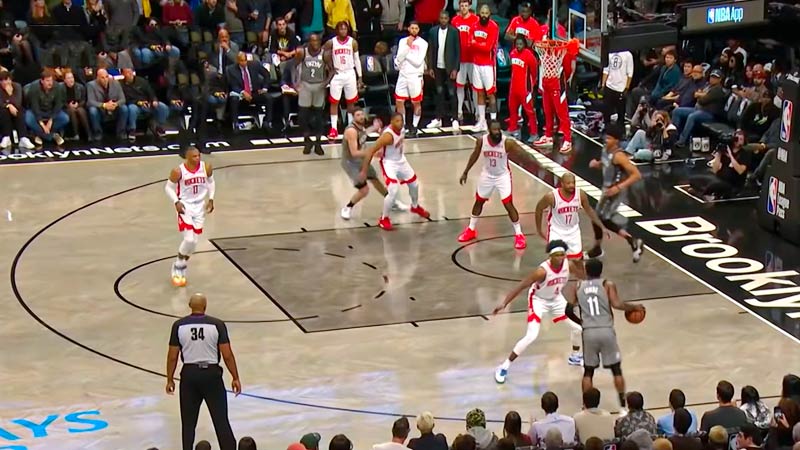
When performing a crossover in basketball, there are a few key points to keep in mind:
Practice
Consistent practice is essential to master the crossover move. Focus on developing quick hands, improving coordination, and refining your timing and execution.
Read the Defender
Pay attention to the defender’s positioning, footwork, and reaction to your moves. Exploit their weaknesses and capitalize on their reactions to maximize the effectiveness of your crossover.
Timing and Speed
The crossover should be executed with speed and precision. A well-timed crossover combined with explosive acceleration can create significant separation from the defender.
Protect the Ball
While executing the crossover, keep your body between the ball and the defender to protect it from being stolen. Maintain a strong grip and control over the ball throughout the move.
Counter Moves
Effective ball handlers understand the importance of incorporating counter moves. If the defender anticipates your crossover, be prepared to adapt and utilize other dribble moves or fakes to maintain an advantage.
Historical Significance of Dribble in Basketball
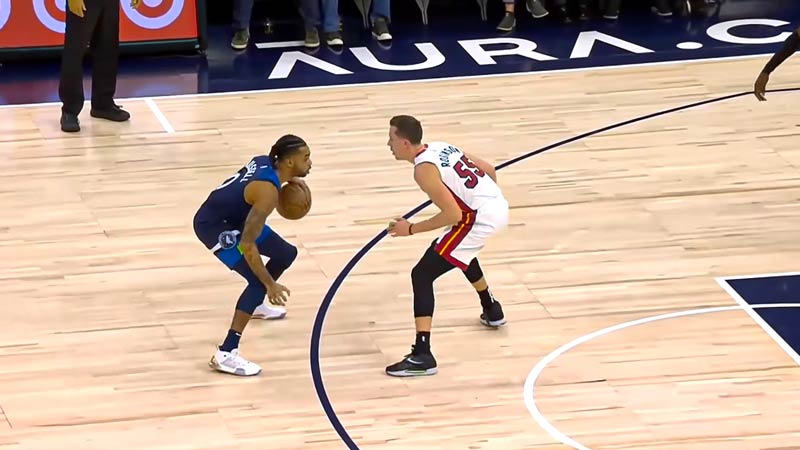
The dribble is an essential skill in basketball, enabling players to maneuver the ball and create scoring opportunities.
Over the years, the dribble has undergone significant developments, and players who have showcased exceptional dribbling abilities have left a lasting impact on the game.
Bob Cousy – The “Houdini of the Hardwood”
Bob Cousy, a renowned point guard of the 1950s and 1960s, revolutionized ball handling with his exceptional dribbling skills.
He introduced behind-the-back dribbles, no-look passes, and dribble moves that mesmerized audiences and set a new standard for ball-handling proficiency.
Magic Johnson – The Maestro of Showtime
Magic Johnson, a versatile player known for his passing ability and court vision, utilized his exceptional dribbling skills to orchestrate the fast-paced “Showtime” Lakers.
His size and ball-handling prowess allowed him to play multiple positions and create scoring opportunities for his teammates.
Allen Iverson – The Crossover King
Allen Iverson, often regarded as one of the greatest ball handlers in NBA history, popularized the killer crossover move. His lightning-quick crossovers, combined with his explosive scoring ability, made him a nightmare for defenders to guard.
Kyrie Irving – The Wizard with the Ball
Kyrie Irving, a modern-day point guard, has taken ball handling to new heights with his incredible dribbling skills.
His mesmerizing crossovers, combined with his exceptional handles and creativity, have solidified his place as one of the most skilled dribblers in the game.
FAQs
Can anyone learn to execute a crossover effectively?
Yes, with practice and dedication, anyone can improve their crossover skills. It requires consistent practice, focus on technique, and an understanding of timing and body control.
Is the crossover move legal in basketball?
Yes, the crossover move is legal as long as the dribbler does not violate other rules, such as carrying or palming the ball.
What if the defender doesn’t fall for the crossover?
If the defender doesn’t fall for the crossover, it’s important to have countermoves in your arsenal. These can include hesitation dribbles, spin moves, or pull-up jumpers to create scoring opportunities.
Can crossovers be effective in different areas of the court?
Yes, crossovers can be effective in various areas of the court. Whether it’s in the open court, at the top of the key, or near the baseline, a well-executed crossover can create space and break down defenses.
Are crossovers only used by guards?
While guards commonly utilize crossovers, players of all positions can benefit from incorporating crossover moves into their game. It adds versatility and unpredictability to their offensive repertoire.
Bottom Line
The crossover is a fundamental basketball skill that allows players to create separation from defenders and open up scoring opportunities.
Practice, timing, and a keen understanding of the defender’s movements are crucial for mastering the crossover.
Embrace the historical significance of the dribble in basketball and strive to incorporate this dynamic move into your game, paving the way for greater success on the hardwood. Good luck.

